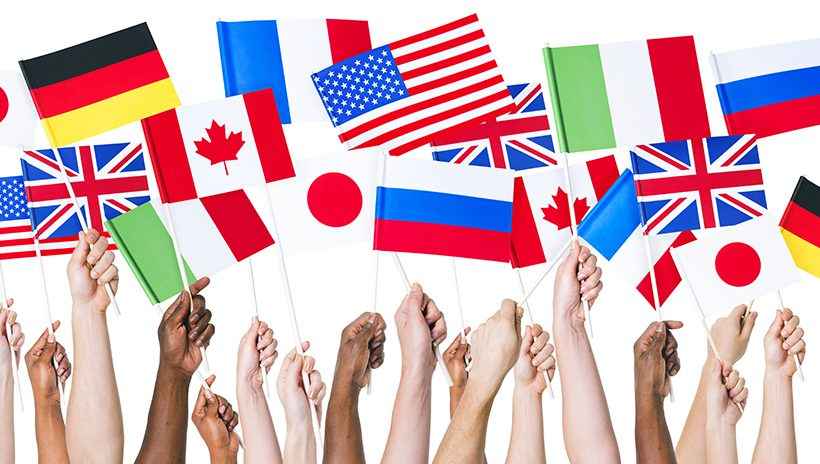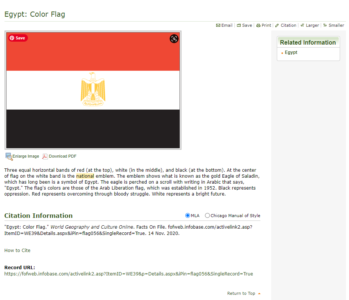National Flags Explain Symbolism, Colors, and Design of Each Flag
World Geography and Culture is a comprehensive, authoritative, and easy-to-navigate database offering content, digital tools, and citable resources for the study of countries, cultures, and geography concepts.
The national flags in World Geography and Culture now come with expanded captions that explain the symbolism of the colors and design behind each flag. The design elements of national flags are usually selected to represent aspects of the country’s history, culture, religion, or geography. To discover the meaning behind each flag, students or educators can easily click on the “Color Flag” of each country.
20 New Videos, Including Planet Earth II
20 new videos have also just been added to World Geography and Culture, including the six-volume nature documentary Planet Earth II. Presented by David Attenborough, the landmark series takes the viewer through jungles, deserts, mountains, islands, grasslands, and cities, exploring the unique characteristics of Earth’s most iconic habitats and the extraordinary ways animals survive within them.
Explore New Country and Citable CIA Data, Easily Sharable to Your LMS
Entries on the subjects of geography, people and culture, weather and climate, history, government, and society have been updated for the countries of Belarus, Benin, Bhutan, Burkina Faso, Cameroon, Central African Republic, Cote d’Ivoire, Mongolia, and Nepal.
This release also contains updated CIA country data for 11 categories as well as various updates for the 2020 U.S. election results.
Click on the links below for more information about World Geography and Culture:
See also:
- Digital Archives for Research and Teaching Purposes in World History
- Modern World History offers a comprehensive look at world history from the mid-15th century to the present. Thousands of subject entries, biographies, images, videos and slideshows, maps and graphs, primary sources, and timelines combine to provide a detailed and comparative view of the people, places, events, and ideas that have defined modern world history. Learn more about Modern World History for K–12 schools and districts, public libraries, and colleges and universities.



